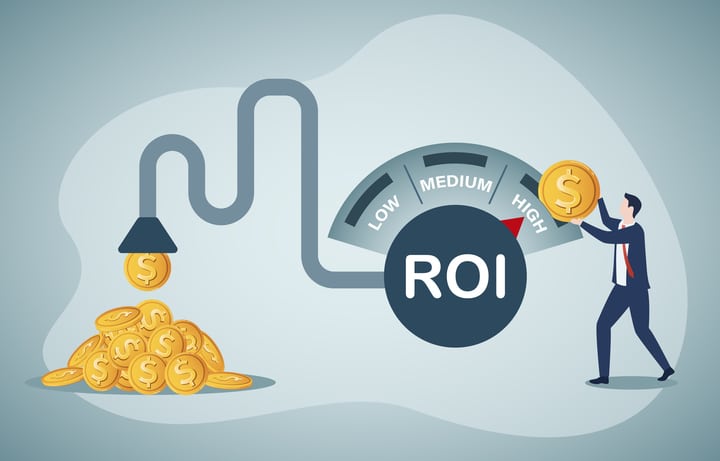In the world of digital marketing, understanding your return on investment (ROI) is crucial. ROI helps you determine whether your marketing efforts are paying off and guides where to allocate your budget for the best results.
However, measuring ROI in digital marketing can be complex due to the variety of channels and metrics involved. By focusing on the right strategies, tools, and KPIs, you can get a clear picture of your marketing success and optimize future campaigns.
In this post, we’ll break down the best tips for accurately measuring ROI in digital marketing to help you make more informed decisions about your strategies.
Why Measuring ROI Matters in Digital Marketing
ROI is the clearest indicator of whether your digital marketing campaigns are generating value for your business.
Whether you’re running paid ads, email campaigns, or social media promotions, understanding how much revenue these activities generate compared to their costs allows you to refine your marketing strategy, avoid wasteful spending, and focus on the tactics that provide the best results.
By accurately measuring ROI, you not only prove the value of your marketing efforts but also gain insight into how to improve them for future success.
Best Tips for Measuring ROI
1. Set Clear Goals and Objectives
Before you can measure ROI, you need to define what success looks like. Establish specific, measurable goals for each campaign.
Whether it’s increasing website traffic, generating leads, or boosting sales, having a clear objective helps guide your measurement strategy.
Align your goals with key performance indicators (KPIs) like conversion rates, cost per lead, or customer lifetime value. For example, if the goal of a Facebook ad campaign is to generate leads, you should track how many leads the campaign produces and compare that number to the cost of running the ad.
2. Track the Right KPIs
Choosing the right metrics is essential for accurately measuring ROI. Some common KPIs for digital marketing include:
-
- Conversion Rate: The percentage of visitors who take the desired action (e.g., making a purchase or signing up for a newsletter).
- Customer Acquisition Cost (CAC): How much it costs to acquire a new customer.
- Customer Lifetime Value (CLV): The total revenue you can expect from a single customer over the course of your relationship.
- Cost Per Lead (CPL): The average cost of generating a new lead through a campaign.
By focusing on these KPIs, you can evaluate the effectiveness of your marketing efforts and adjust accordingly.
3. Use Attribution Models
One of the biggest challenges in digital marketing is understanding which channels are driving the most value.
Attribution modeling helps you assign credit to the various touchpoints a customer interacts with before converting. Some common models include:
- First-Click Attribution: Gives full credit to the first interaction.
- Last-Click Attribution: Assigns all credit to the final interaction before conversion.
- Linear Attribution: Spreads credit evenly across all touchpoints in the customer journey.
By using attribution models, you can better understand the role each channel plays in driving conversions and adjust your marketing strategy to maximize ROI.
4. Leverage Analytics Tools
Tools like Google Analytics, HubSpot, or SEMrush provide detailed insights into your campaigns and customer behavior. These tools allow you to track conversions, calculate CAC, and measure the effectiveness of each digital marketing channel.
Make sure you set up proper tracking with UTM codes, goal completions, and event tracking to capture the full scope of your efforts. For example, Google Analytics can show you how many visitors came from a specific email campaign, how long they stayed on your site, and whether they completed a purchase, giving you valuable data to assess ROI.
5. Calculate ROI Regularly
To calculate digital marketing ROI, use this simple formula:
ROI = (Revenue – Cost) / Cost x 100
This formula will give you a percentage that reflects the return on your marketing investment. For example, if you spent $1,000 on a campaign and generated $2,500 in revenue, your ROI would be:
ROI = ($2,500 – $1,000) / $1,000 x 100 = 150%
Regularly calculating ROI throughout your campaigns allows you to make real-time adjustments and ensure that your marketing budget is being spent wisely.
6. Test, Analyze, and Optimize
Digital marketing is an ever-evolving field, and the most successful marketers continually test and refine their strategies. By running A/B tests, experimenting with different content formats, and analyzing the results, you can uncover new insights that drive better ROI.
Pay attention to underperforming campaigns and identify areas for improvement, whether it’s tweaking your messaging, targeting, or creative assets. Optimization is key to improving future campaigns and increasing the overall effectiveness of your digital marketing efforts.
Drive Your Growth With Sprout Media Lab
Measuring ROI in digital marketing is essential for proving the value of your campaigns and making data-driven decisions.
By setting clear goals, tracking the right KPIs, using attribution models, and leveraging analytics tools, you can gain valuable insights into what’s working and what’s not. Regularly calculating and optimizing your campaigns will help you maximize your marketing efforts and ensure long-term success.
Understanding and improving your digital marketing ROI doesn’t have to be overwhelming. At Sprout Media Lab, we’re here to help you every step of the way!
Our team of experts can craft customized strategies in SEO, PPC, and content marketing to boost your results and make the most of your marketing investment.
If you’re looking for support in optimizing your campaigns and driving real growth, give us a call at (800) 617-6975—we’d love to chat about how we can help your business succeed!












